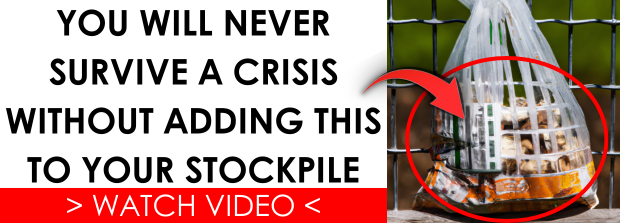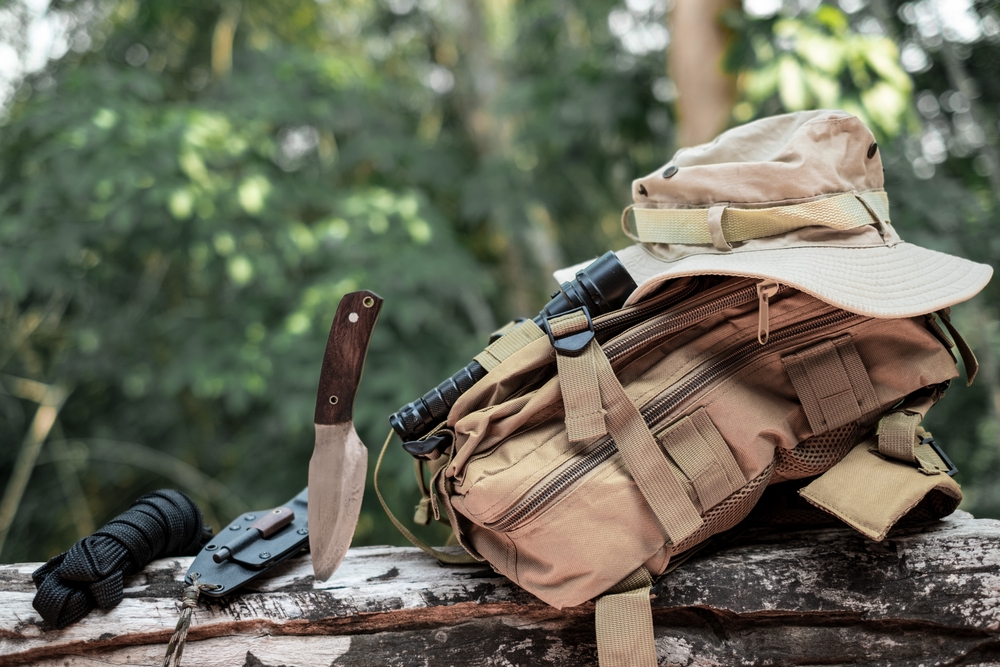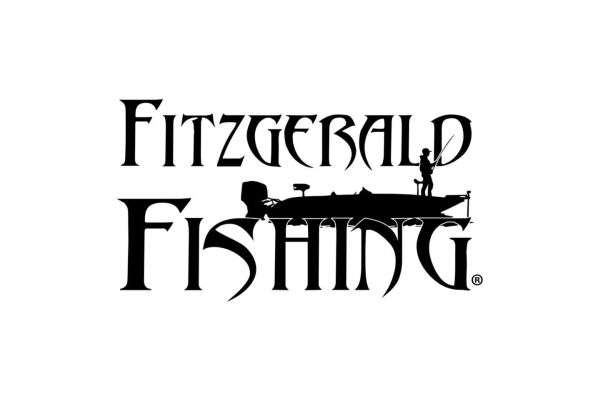Concerning survival equipment and supplies, the more “tacti-cool” elements tend to garner the lion’s share of attention. Other items which are sometimes just as important to survival tend to get overlooked. This article will take a look at the latter, which includes items that people have needed in actual survival ordeals or could need in response to known threats that simply have not yet occurred but could or probably will occur someday.
When survival instructors write books about survival and leave firearms and ammunition out of lists of survival equipment, there are many reasons why they might do so, but don’t believe for a moment that it is ever done unintentionally. You would have to be pretty far gone to forget to bring a gun or a knife, but there are other things that even people who teach survival for a living do leave out without intending to do so. Obviously, these same items are also unintentionally left out of lists by laypersons, only with much greater frequency.

Most of the contents lists available are for survival kits prepared solely for wilderness survival, to the exclusion of all other possible (and some much more likely) survival scenarios, but a survival kit belonging to a survivalist should take into consideration both a wider range of environments, including built environments such as urban, suburban and rural environments, and threats, such as EMP, cyberattack, weapons of mass destruction, war, unrest, natural disasters, severe weather events, and so on. Contents lists for military survival kits come closer to meeting the needs of survivalists, but the military has different goals compared to survivalists and has the benefit of the largest logistics infrastructure on the planet, which survivalists obviously lack.
1. Optics
One item that I seldom see included in survival kit contents lists is optics. Even a small monocular can enable the survivalist to tell members of his party from strangers at a great distance. This ability is especially useful on the trail. It also enables him to scan waists and hands for weapons. Optics are also useful for scanning water sources in the desert, bridges, and other choke points where ambush is most likely and observe checkpoints.
For those who can afford them, night observation devices give the survivor an advantage when traveling and operating at night, helping him avoid discovery and unwanted contact.
2. Soap
I almost never see soap listed in contents lists for survival kits, which is troubling.
I try to keep references to military manuals to a minimum, but FM 21-10 Field Hygiene & Sanitation, shares an important data point for people interested in survival, which is that only 20% of historical hospital admissions during wartime have been from battle related injuries and that 80% of hospital admissions were from disease and non-battle related injuries. These numbers are for military personnel during every conflict the United States had participated in before the year 2000. (US Army Medical Department Center and School, 2000)
So, if military personnel are four times as likely to be taken out of action by microbes as by bullets, during wartime, then survivalists are surely even more likely to be struck down by the former. The takeaway here is that survivors should devote more resources to preventing illness and improving sanitation and hygiene. Soap isn’t as sexy as guns, but it clearly saves more lives. (I hate to point that out as firearms are a big part of my life, and they sell more books than soap.)
Another fact that I find most survivalists are not aware of is that they are just as likely to become infected by giardia (a common protozoan that is a waterborne parasite) because they failed to wash their hands before meals, as by drinking contaminated water.
3. Benzoin Tincture or Compound Benzoin
Benzoin is an item that I seldom see included in contents lists for first aid kits that are part of survival kits. Benzoin is a skin protectant that greatly improves the adhesion of medical tape. It is important because survivors cannot carry medical supplies with them, so they need the dressings that they do have to stay in place all day, and often under intense physical activity.
Using benzoin is particularly important when applying wound closure strips, such as 3M Steri-Strips. There are additional reasons to carry benzoin, but this is the primary reason that I carry it. It makes adhesive dressings stay in place, thus conserving the limited supply of sterile dressings that can be included in a survival kit.
Another closely related issue is the width of medical tape carried. I recommend carrying 2” cloth tape. It can be cut into narrower strips if needed but 1” tape only gives 0.5” in contact with the skin and 0.5” in contact with the dressing, which is insufficient to dress serious injuries.
4. Fuel
Everybody seems to realize the need to stockpile food, but fewer think through how they are going to turn that food into an edible meal. Fuel is necessary for cooking, warmth and transportation.
Shackleton’s 1914-1916 Trans-Imperial Antarctic Expedition is remembered as a triumph of his leadership and tenacity. His ship, the Endurance, was trapped in sea ice for 7 months before the ice crushed it, and it sank.
They took the ship’s three small boats and survived another 5 months on the ice flow, until it broke up enough that they could sail their small boats to Elephant Island. With the crew safe on Elephant Island, Shackleton led a small party which navigated to South Georgia Island and then trekked across the Island’s mountains and glaciers to the whaling station on the far side. Shackleton then mounted a rescue mission to rescue the bulk of his crew back on Elephant Island. (Armstrong, 1998)
If Shackleton had not stocked the Endurance with sufficient fuel and his men built and modified stoves to burn seal blubber after their ship sank, the expedition would be remembered differently.
5. Water
Most survivalists store food, but too few store water. Disasters that knock out power for more than a few hours also take down water treatment plants, making it necessary to boil water before drinking.
It is important to learn about your culinary water system. Will it lose pressure in an emergency? Is it gravity end-to-end? If not, you’ll have to haul water from a nearby water source. If the source is a well, you will have to be able to get water out of it even if the grid is down. Do you have everything you need to treat surface water and haul it home?
People tend to include the means to treat water, such as a container to boil it or a filter or chemicals to treat it but they leave out water itself. Having the means to treat water is only useful if you have water to treat in the first place. For more information on water storage, learn how to store drinking water 25 years without rotation. The same method used to stockpile water can be used to store water in survival kits.
6. Salt and Spices
As mentioned, everyone remembers to store food, but somehow all the other things needed to cook food get left out. I have observed that folks who have eaten wild game more than once tend to add salt, bouillon powder and sometimes other spices to their survival kits.
The transition from a western diet to a “hunter-gatherer diet minus the salt” is not a pleasant one. I remember my first meals eating quail and cottontail rabbits over my campfire as a kid. It was awful, and it changed what I brought with me on survival outings.
The next time I went out, I grabbed a bottle of barbeque sauce out of the pantry, and it made a big difference. Barbeque sauce even makes javelina edible. It makes everything taste like barbeque sauce, which is often a big step up.
Add a couple packets or cubes of bouillon powder and some salt to your survival kit and carry more in your pack. It enables you to make stew, which retains fat calories that would be lost by dripping into the fire if you had grilled the meat.
In a survival ordeal, you need all of the calories from fat that you can get to avoid protein toxicity, also known as “rabbit starvation.” It is a life-threatening medical condition caused by the buildup of metabolic waste. Protein toxicity causes malnutrition and impairs kidney function no matter how much lean meat you eat, and as you probably already know, most wild game is very lean. (Wikipedia, 2025)
7. Heirloom Seeds
In reading about displaced peoples, I noticed that when they moved, they always brought seeds with them so they could plant food cultivars when they reached a destination to ensure food security. Native Americans brought seeds when they were marched to reservations and when they were displaced by enemy tribes. Early American colonists, Mormon pioneers and other religious refugees brought seeds.
Are you as smart as they are? You might have access to more knowledge, but if we could take a group of Americans born after the year 2000 and a group of folks who lived 200 years ago or more, and we could drop them both onto deserted islands, my money is on the folks form the past simply because they know where food comes from, how to light a fire with flint and steel, how to make a pine torch, how to sharpen a knife, and just generally had to be more self-reliant than people do today.
8. Portable Wealth
Money is a tool to get things done. Of course it is only useful in situations where you are in contact with other people, but outside the realm of wilderness survival ordeals, this is more often the case. How many more people have been displaced due to war, famine or climate change (such as an ice age) than have experienced a wilderness survival ordeal?
You may have to get creative with the medium of exchange. One or more currencies could become worthless or nearly so, requiring the exchange of a more stable foreign currency, the barter of precious metals or even shelf stable food or valuable medicine.
9. Communications Plan
In order to communicate effectively, you need at least two parties with radios, a power source, and a communications plan that tells the users what frequency to tune the radios to and when to listen.
Your communications plan should also include important phone numbers and addresses in case your smartphone gets damaged, and the electrical grid and the Internet are down.
10. Rechargeable Batteries, Solar Battery Pack, Battery Charger, Universal Charge Cable
In any survival ordeal that lasts more than a few days, keeping LEDs and communications gear running becomes a challenge. Losing their connection to the outside world deals a crushing blow to morale.
Carrying a pocket-sized solar battery pack, a battery charger, rechargeable batteries and universal charge cables makes it possible to recharge electronics anywhere you have access to a few hours of sunlight each day.
11. Faraday Cage
It would be a shame to store electronics and solar gear and rechargeable batteries to keep it all running only to have it damaged by a HEMP weapon. A Faraday cage or pouch can help mitigate that risk. You can even build one yourself. Check out my article: 3 Ways to Build a Faraday Cage.

Read the full article here




